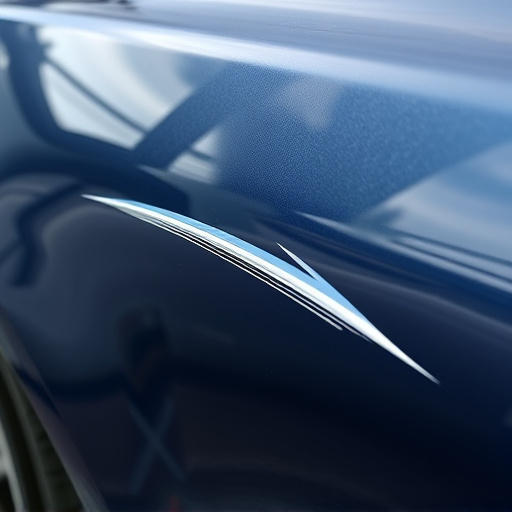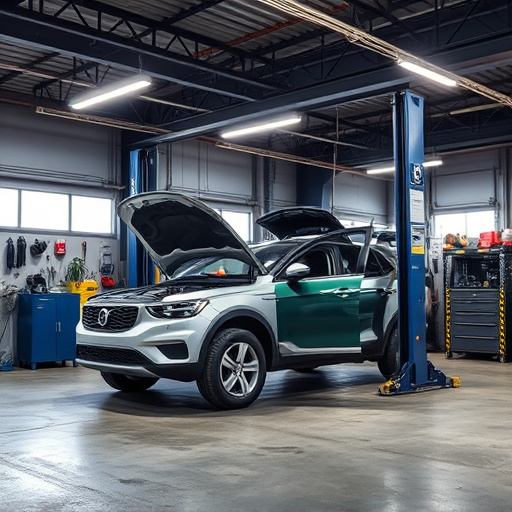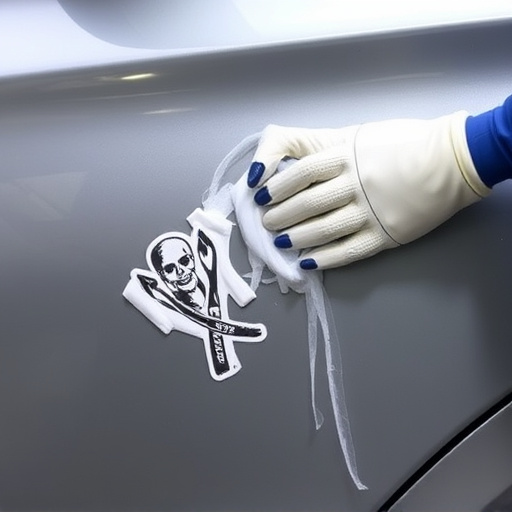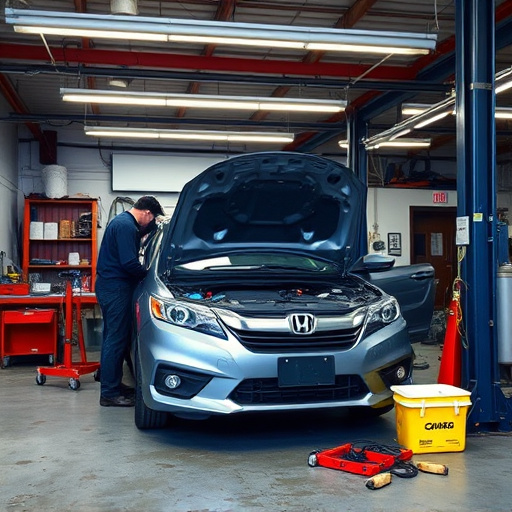The ultrasonic thickness gauge is a crucial non-destructive testing tool for post-repair quality inspections in the automotive industry. It enables precise material thickness measurements, assists in scratch repair decisions, and detects invisible issues, enhancing repair quality, customer satisfaction, and safety. This advanced sound wave technology has become indispensable in autobody shops, but effective use requires staff training, calibration, clear protocols, and adherence to best practices.
“Unleashing precision in post-repair quality inspections, the ultrasonic thickness gauge stands as a reliable tool for automotive and manufacturing sectors. This technology delves beyond visual cues, providing non-destructive measurements that ensure repair integrity. By emitting high-frequency sound waves, these gauges accurately determine material thickness, revealing hidden defects or variations. This article explores the revolutionary capabilities of ultrasonic thickness gauges, highlighting their benefits in enhancing post-repair control processes, and offering practical insights for workshop implementation.”
- Understanding Ultrasonic Thickness Gauge Technology
- Benefits of Using Gauges for Post-Repair Quality Control
- Implementation and Best Practices in Repair Workshops
Understanding Ultrasonic Thickness Gauge Technology

An ultrasonic thickness gauge is a non-destructive testing tool that utilizes high-frequency sound waves to measure the thickness of materials, especially in the automotive industry. This technology has become an indispensable asset for post-repair quality inspections, particularly in collision repair and luxury vehicle repair settings. By sending ultrasonic pulses through a material, the device accurately determines its thickness, ensuring that repairs are carried out with precision and adhering to strict standards.
In scratch repair processes, for instance, understanding the original material thickness is crucial to determining the extent of damage and the amount of filler or paint required. The ultrasonic thickness gauge provides real-time data, allowing technicians to make informed decisions, guarantee structural integrity, and deliver high-quality repairs on a variety of vehicles.
Benefits of Using Gauges for Post-Repair Quality Control

Using ultrasonic thickness gauges for post-repair quality control offers numerous advantages. These non-destructive testing tools allow for precise measurements of material thickness, ensuring that repairs are done accurately and to the highest standards. This is particularly crucial in autobody repairs, where even minor discrepancies can affect the structural integrity and overall aesthetic appeal of a vehicle.
With an ultrasonic thickness gauge, auto body services can verify the quality of their work after completing processes like dent removal. It enables them to detect any residual issues or inconsistencies that might be invisible to the naked eye, thereby enhancing the overall repair quality. This not only ensures customer satisfaction but also prevents potential safety hazards down the line.
Implementation and Best Practices in Repair Workshops
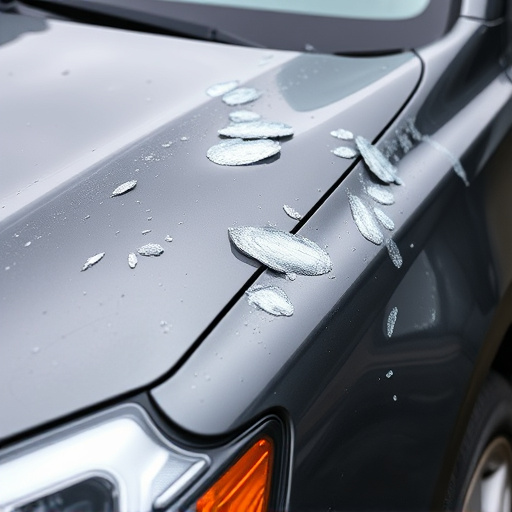
In the realm of post-repair quality inspections, the ultrasonic thickness gauge has emerged as a indispensable tool in automotive body shops and repair workshops alike. Its implementation involves utilizing advanced sound waves to measure the depth of dents or imperfections, ensuring precision and accuracy in determining structural integrity. By integrating this technology into their workflow, repair facilities can significantly enhance the consistency and reliability of their work.
Adhering to best practices is crucial for effective use of the ultrasonic thickness gauge. Repair workshops should ensure proper training of staff to operate the device accurately. Regular calibration of the gauge is essential to maintain its accuracy. Additionally, establishing clear protocols for measuring various types of damage, especially in complex cases involving dent removal or automotive body work, helps streamline the inspection process. These practices collectively contribute to maintaining high-quality standards and customer satisfaction in auto body shops.
The integration of ultrasonic thickness gauges into post-repair quality inspections offers numerous advantages, ensuring precision and efficiency. This technology enables repair workshops to consistently deliver high-quality work by accurately measuring material thickness, identifying discrepancies, and promoting consistent results. By adopting best practices and utilizing these advanced tools, workshops can elevate their standards, maintain customer satisfaction, and stay ahead in the industry.


